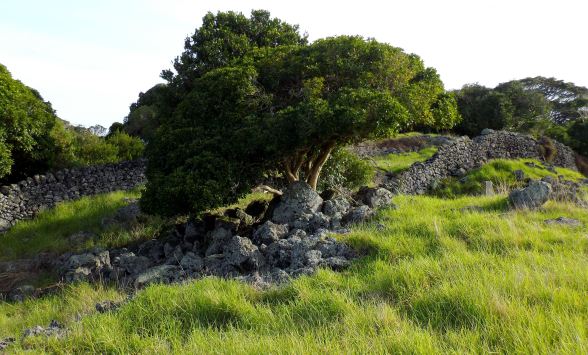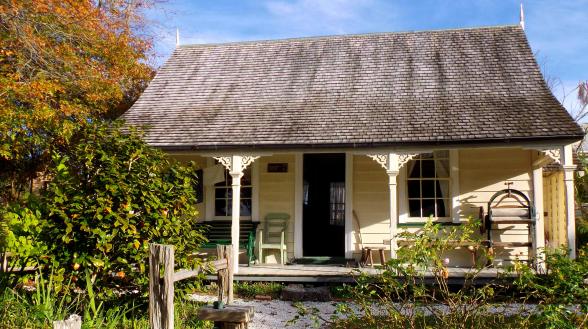Last week, out of the blue, I was asked to “appear” on Radio NZ. They needed a British expat to talk about Brexit, and I can only assume Google led them to this blog.
Okay.
I wasn’t exactly an expert, but I agreed. I figured it would be the most interesting thing to happen to me all week. I did tell them that I was only ten years old when I moved to New Zealand, and had therefore never been registered to vote in Britain in my life, let alone in the last fifteen years. This meant I was unable to actually vote on the EU referendum. (My mum was still eligible – just, but didn’t feel it was her place to.) They still wanted me, so I hurriedly set about doing some research.
 Not getting a say in Brexit, I hadn’t thought too deeply about it. I was vaguely aware of the disturbingly racist turn things were taking, and of the exaggerated threats of a financial Armageddon turning into the actual Armageddon, but I hadn’t thought far beyond how it would impact upon me directly: I’d rather not give up my EU passport, thank you very much! I like having the option of living and working indefinitely – hassle-free – on “the Continent”. In fact, my New Zealand-born, German-bred boyfriend and I attempted to do just that a couple of years ago. (We only returned to New Zealand because his mum was diagnosed with terminal cancer.)
Not getting a say in Brexit, I hadn’t thought too deeply about it. I was vaguely aware of the disturbingly racist turn things were taking, and of the exaggerated threats of a financial Armageddon turning into the actual Armageddon, but I hadn’t thought far beyond how it would impact upon me directly: I’d rather not give up my EU passport, thank you very much! I like having the option of living and working indefinitely – hassle-free – on “the Continent”. In fact, my New Zealand-born, German-bred boyfriend and I attempted to do just that a couple of years ago. (We only returned to New Zealand because his mum was diagnosed with terminal cancer.)
I realised, of course, that it was selfish to think this way. If I’d believed that it was in Britain’s best interests to leave the EU, (and if, of course, if I’d been able to vote,) I would have voted Leave. After doing some proper research, however, I did not believe that leaving the EU was in Britain’s best interests. When pretty much every expert in the world says it’s a bad idea, and when Nigel Farage and Donald Trump think it’s a good idea… it probably isn’t a good idea.
During the course of my research, I became seriously disheartened. The lies of the politicians, the stupidity of the people, the crass xenophobia suddenly given not just a voice, but a megaphone… I do realise there were perfectly good reasons to leave the EU, and if you’re one of the many perfectly nice, non-racist people who actually thought about their vote with some degree of intelligence, fair enough, and I have no qualms with you. The thing is, the more I researched, the more I came to realise that the worst outcome wasn’t leaving the EU: the worst outcome had already happened.

The atmosphere that this whole Brexit debacle has awoken in Britain is bloody terrifying. Watching from New Zealand, I’m seeing scenes reminiscent of 1930s Germany. Does the human race never learn anything?! The insidious fear-mongering is simply disgusting. Aggressive, pig-headed nationalism isn’t a good look for any country and, surely, we all know where it leads. Human beings should be working together for peace, not demonising anyone with a different accent! As an immigrant myself, I can sympathise and it’s scary.
I always thought my homeland was one of the saner places in the world. Well there goes my innocence.
I watched the votes being counted on the BBC website all throughout last Friday afternoon. (It was the middle of the night in Britain.) I became increasingly nervous, not just because I was waiting to go on the radio and make complete tit of myself, but because Leave was winning. That wasn’t supposed to happen! What about Scotland?
“Don’t worry,” I said half-jokingly to a friend on Facebook. “Scotland will save us!”
 The thing is, I have four hundred Facebook friends. (When you move around a lot that tends to happen.) Of those four hundred, only two (that I saw) expressed a desire for Britain to leave the EU. Now, my friends are, naturally, made up of mostly people of a similar age to myself, i.e. young people. They are mostly either:
The thing is, I have four hundred Facebook friends. (When you move around a lot that tends to happen.) Of those four hundred, only two (that I saw) expressed a desire for Britain to leave the EU. Now, my friends are, naturally, made up of mostly people of a similar age to myself, i.e. young people. They are mostly either:
- Brits living in Britain
- Brits living/studying in other European countries
- Brits living in New Zealand
- New Zealanders living in New Zealand
- New Zealanders living in Britain
When the result of the vote was announced, my Facebook wall was flooded with dismay. People weren’t just disappointed, they were angry and scared. Some of them – New Zealanders, obviously – were amused. (You know, watching Britain tear itself apart is funny.) Being mostly young people, it’s not surprising that the vast majority of my friends wanted Britain to remain in EU. The vast majority of young people who voted in the referendum voted Remain. Forgive us for being optimistic.
Young people are often called selfish by the older generation, yet my generation is, so far, the most tolerant, open and accepting of any in history. We celebrate diversity. Most of us have been brought up with the message that love is love. We want to live in peace. We want the world to live as one. (Not in a homogenised way, in an inclusive way.) We want to look outwards, and out for each other.
To me, the entire Brexit thing was deeply demoralising. A sad, ironic version of John Lennon’s Imagine has been looping in my mind since Friday. I’ve seen the young voters criticised as idealists – well, bloody hell! What’s wrong with striving to live in an ideal world? As soon as you give up striving, you slide backwards and history repeats itself!
And I really don’t want history to repeat itself now we’ve got nuclear arsenals.

You know, I’m not a hippy. I’ve never particularly loved John Lennon. I’ve always enjoyed his music in the background, but, until these last few days, it’s never brought tears to my eyes.
You may say I’m a dreamer
But I’m not the only one
I hope someday you’ll join us
And the world will live as one
Remember, older generation? Remember when you loved that song? You used to be young and hopeful like us. I know your experience of the world since has made you cynical. Made you want to protect your own with no room for anyone else. Back when you had nothing, you were perfectly happy to share. Why aren’t you now?
Of course, I know the answer to that. And it is disheartening.

But anyway, here’s a link to my radio thing if any of you are interested. I didn’t quite manage to say what I wanted to say. You’ll probably be able to tell by my voice that the phone was shaking in my hand. You’ll definitely be able to tell that the final question threw me – what do you think of the answer I gave? (Also, my mum said I sounded Kiwi! I don’t, do I?)
I want to make it clear that, although I said Brexit was “a bit of a bum result for young people”, I’m not one of those young people railing at old people for forcing us into a future we don’t want. Yes, something like 75% of young people voted to remain in the EU, but less than half of them actually bothered to vote in first place. Which is just another reason to feel disheartened.
 Meanwhile, the Brexit vote has reignited New Zealand’s flag debate. (If anyone thought that referendum was bad…) It’s also ignited a new republic debate. What’s the point, many Kiwis are asking, of staying in the commonwealth if Britain will no longer be our gateway to Europe? Many British expats in New Zealand are now saying, well, we may as well get New Zealand passports then. (Their British passports won’t be superior for much longer.) Many here are sharing the joke that Brits can no longer call Americans stupid. (But, of course, America has a Trump card.) I’m just sitting here feeling physically sick at the thought of Nigel Farage happy.
Meanwhile, the Brexit vote has reignited New Zealand’s flag debate. (If anyone thought that referendum was bad…) It’s also ignited a new republic debate. What’s the point, many Kiwis are asking, of staying in the commonwealth if Britain will no longer be our gateway to Europe? Many British expats in New Zealand are now saying, well, we may as well get New Zealand passports then. (Their British passports won’t be superior for much longer.) Many here are sharing the joke that Brits can no longer call Americans stupid. (But, of course, America has a Trump card.) I’m just sitting here feeling physically sick at the thought of Nigel Farage happy.
Britain doesn’t look like a nice place to be at the moment. I’m glad I’m in New Zealand.















